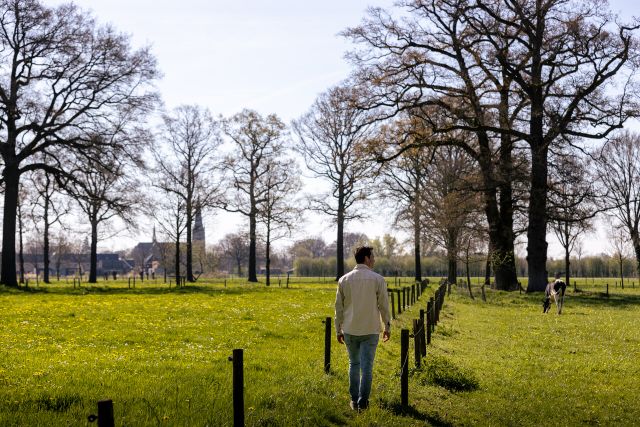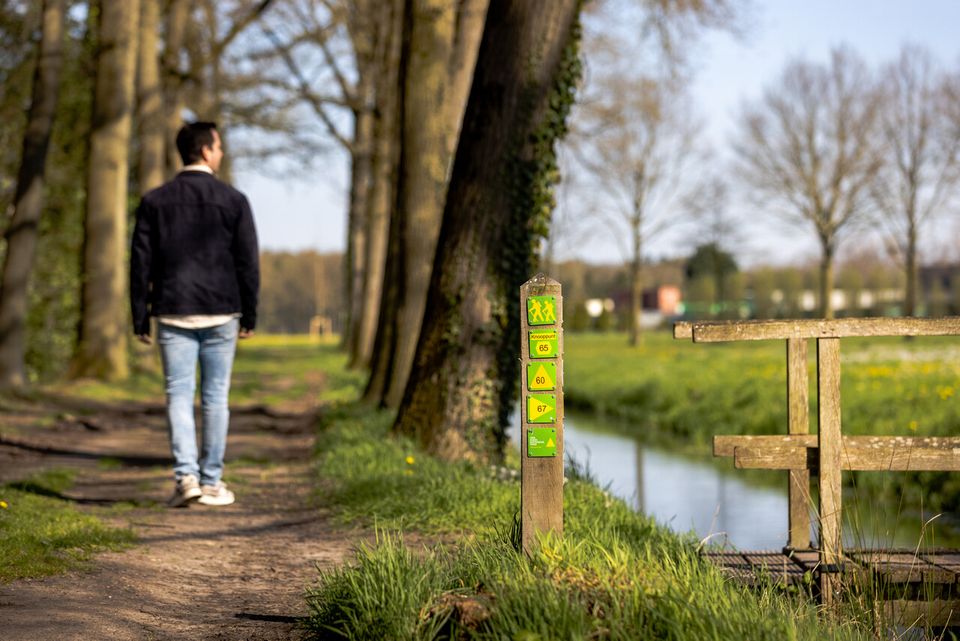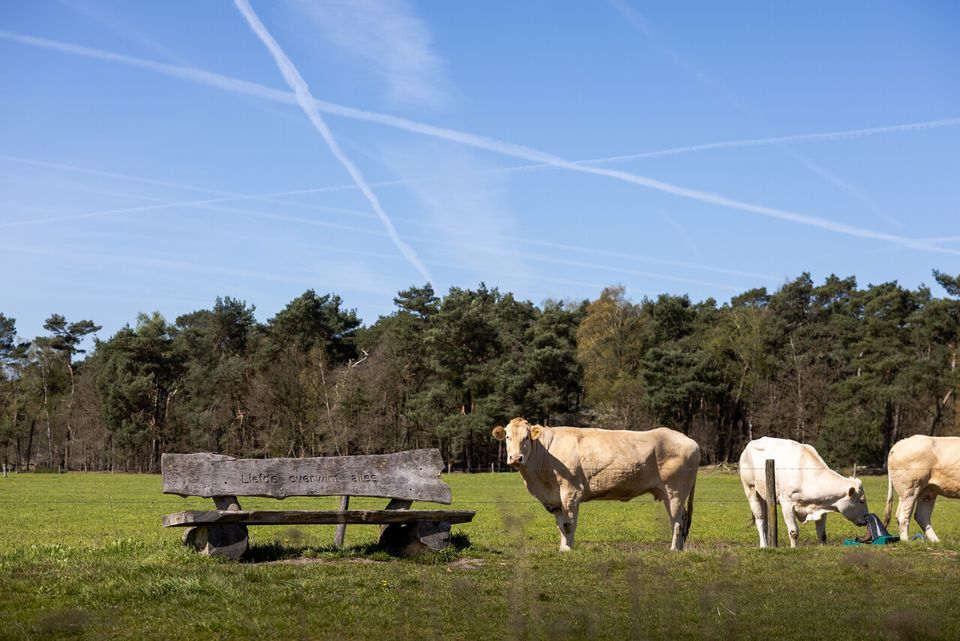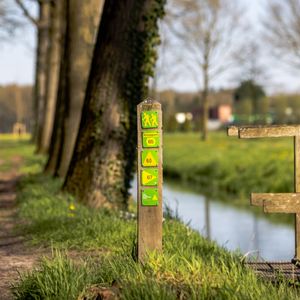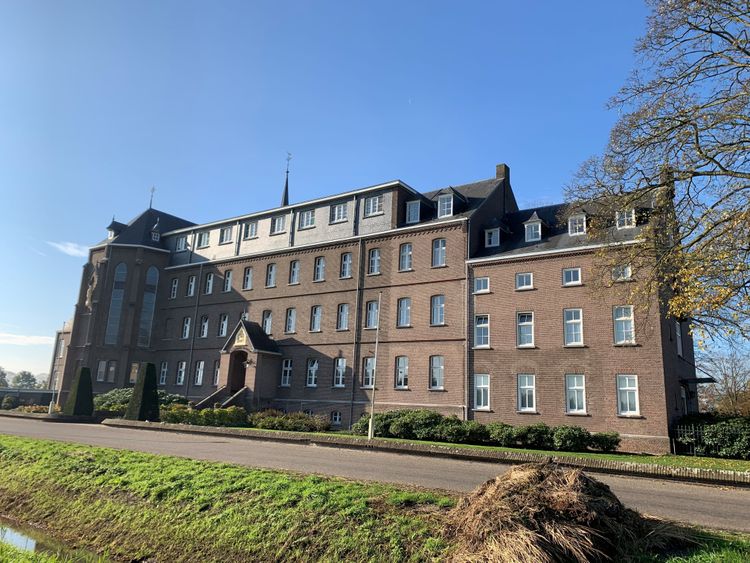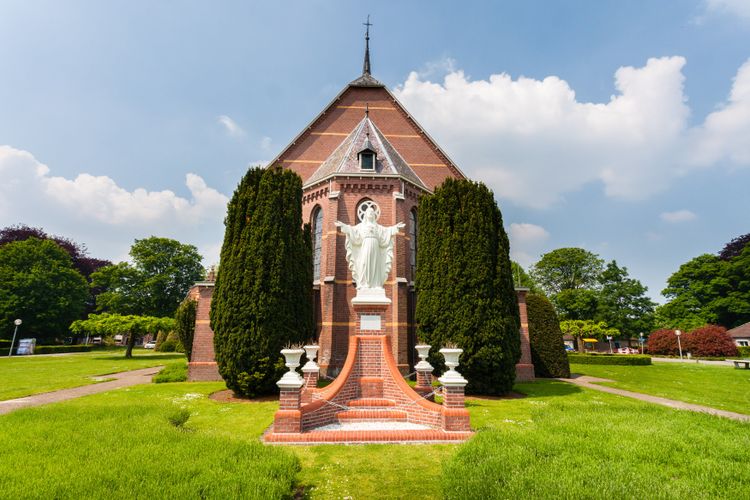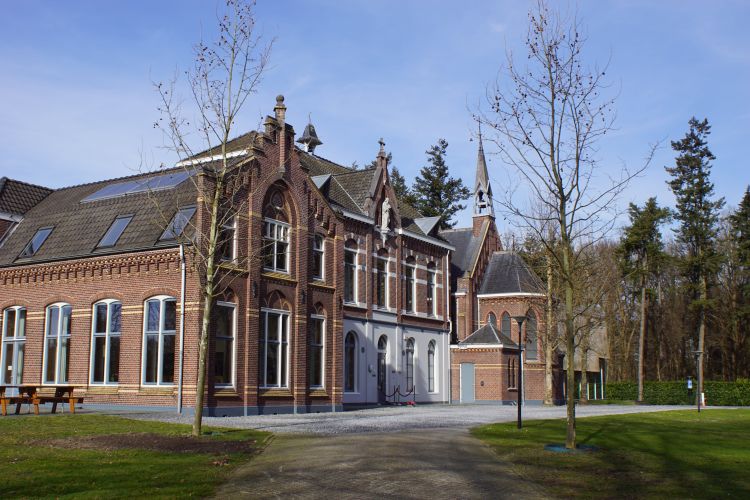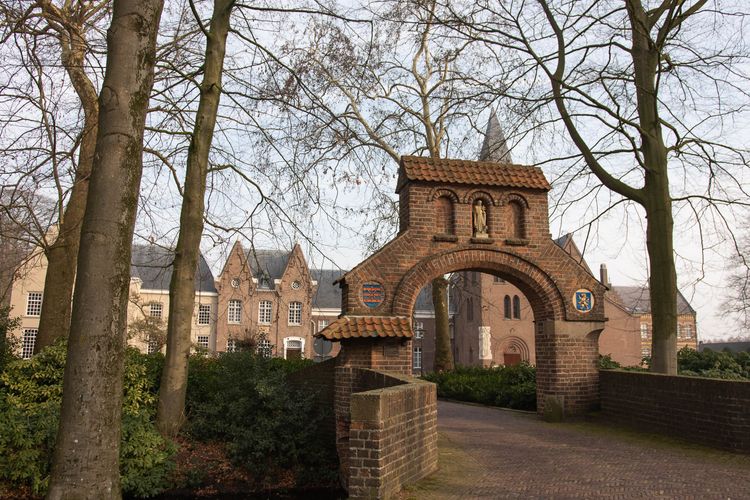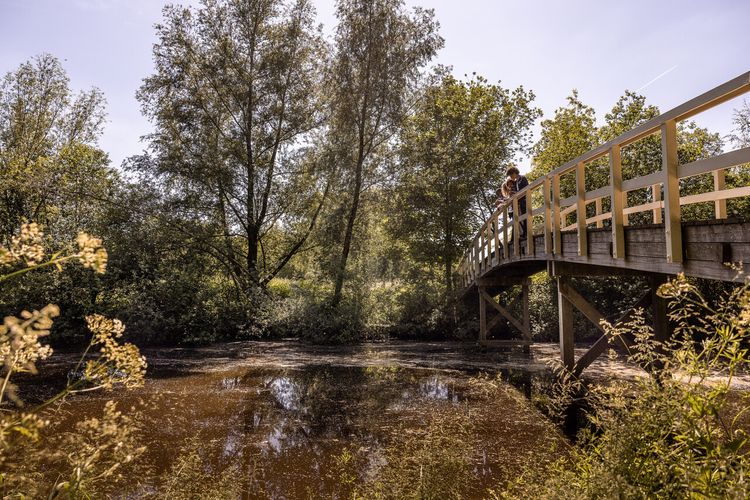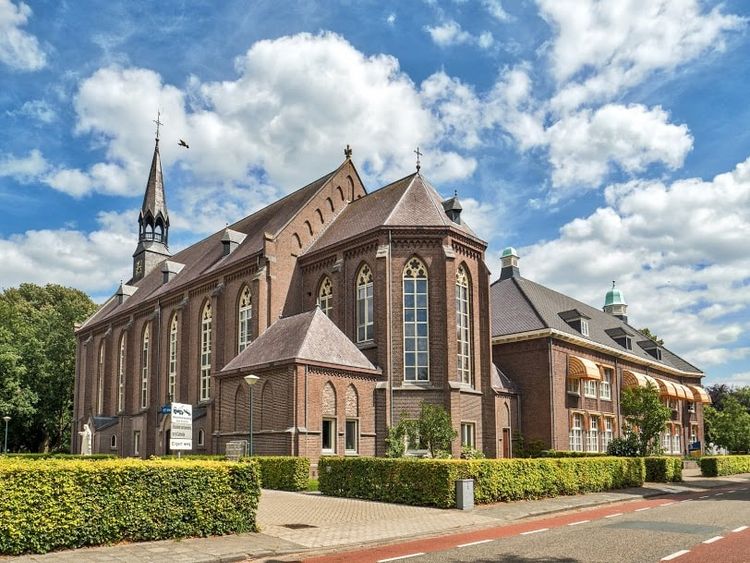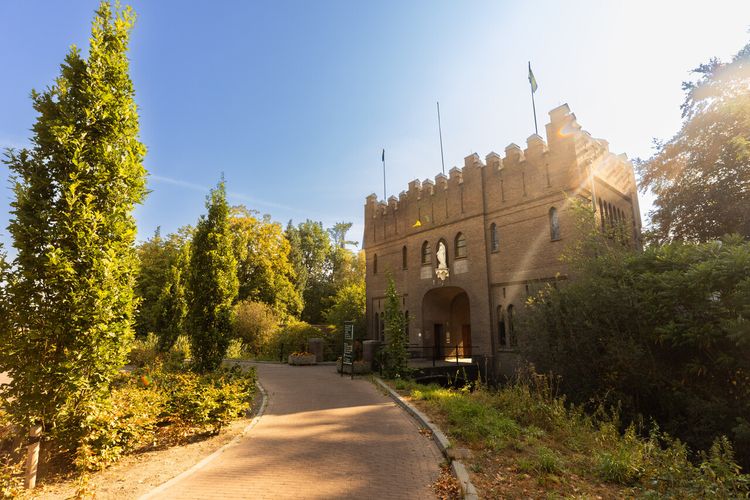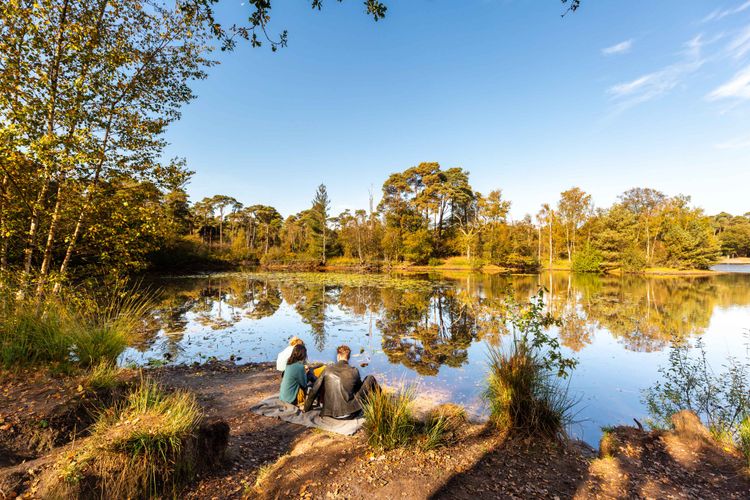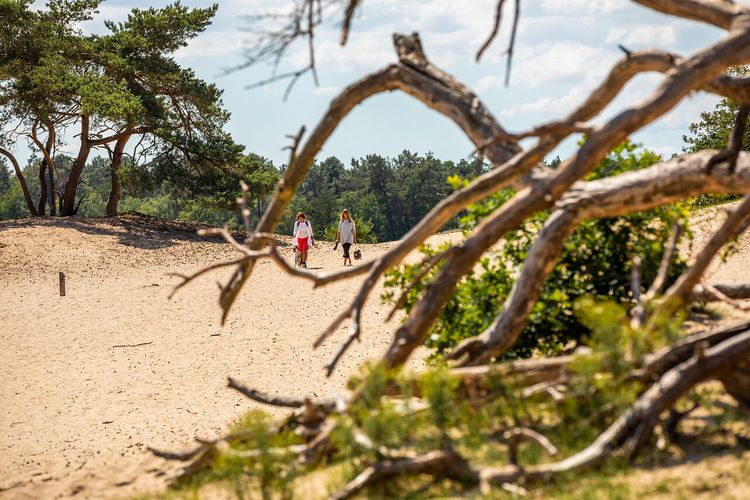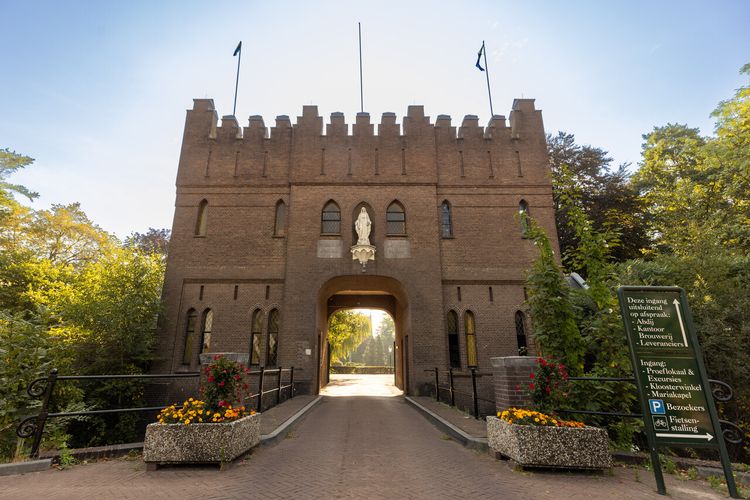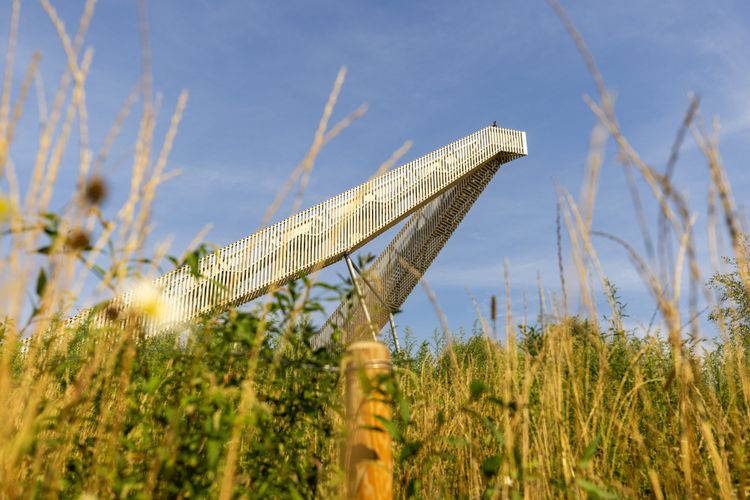Van Gogh NP Walking Route Helvoirt
Discover all the places where Vincent van Gogh lived and worked.
Starting point: from your location
Show all 7 photos
The Van Gogh National Park Walking Route in Helvoirt takes you through the Brabant countryside and to the places where Vincent van Gogh lived and worked. The 15-kilometre walk starts at Saint Nicholas Church and continues through forests, open meadows and past fens. On the way, you pass historic buildings, such as Zwijnsbergen Castle, and natural sights such as Loon and Drunen Dunes and Hengstven nature reserve. Resting points along the way offer you the opportunity to enjoy the views. You can also go to farm shops for local produce and to Hotel De Guldenberg for a culinary stop. With this route, you follow in the footsteps of Vincent van Gogh and discover the beautiful countryside that he loved so much.
Walk through the place where Vincent’s family lived and that inspired him
Welcome …
The Van Gogh National Park Walking Route in Helvoirt takes you through the Brabant countryside and to the places where Vincent van Gogh lived and worked. The 15-kilometre walk starts at Saint Nicholas Church and continues through forests, open meadows and past fens. On the way, you pass historic buildings, such as Zwijnsbergen Castle, and natural sights such as Loon and Drunen Dunes and Hengstven nature reserve. Resting points along the way offer you the opportunity to enjoy the views. You can also go to farm shops for local produce and to Hotel De Guldenberg for a culinary stop. With this route, you follow in the footsteps of Vincent van Gogh and discover the beautiful countryside that he loved so much.
Walk through the place where Vincent’s family lived and that inspired him
Welcome to Helvoirt. This charming village, in the heart of the Van Gogh National Park, is situated in the authentic Brabant countryside with meandering streams, marshlands, sand drifts and farmlands. Vincent van Gogh and his family had an incredibly special bond with this village. It is the place where Vincent’s family life played out and that inspired the young Vincent. Vincent’s father was the minister here from 1871 to 1875. Besides Vincent’s parents, brothers and sisters, several other family members lived here as well. Vincent loved visiting them. This was where he came home. This walking route is 75% unpaved. You walk from the village centre through the characteristic farmlands that inspired Vincent and that are largely being restored.
Van Gogh National Park
The Van Gogh walking tours in the Van Gogh National Park immerse you in the landscape Vincent van Gogh fell in love with. Enjoy the meandering streams, extensive nature reserves, farmland, country estates and greenery that stretches out right into the heart of the villages and towns. The locals are working together to preserve and expand this beautiful, healthy and green living environment. With Vincent van Gogh as their guide.
Finding the way with numbered junctions
This Van Gogh NP walking tour has been mapped out using the local numbered junction system. You can recognise the route by the signs with the words 'Van Gogh National Park', which you will find on every junction post.Between the junctions you can follow the junction system signposts.
Routes reporting point
If you find something wrong with the signage or the route itself, you can report it via the Brabant junction route reporting point. You can also call 0800 4050050 free of charge.
-
Routes reporting point
Routes reporting pointIf there is something wrong on the route, report it here.
Sights on this route
Starting point
De Sint-Nicolaaskerk
Kastanjelaan 16
5268 CA Helvoirt
Navigate to starting point
Saint Nicholas Church
The stately neo-Gothic St Nicholas Church was built between 1901 to 1903 and is exceptionally beautifully decorated.
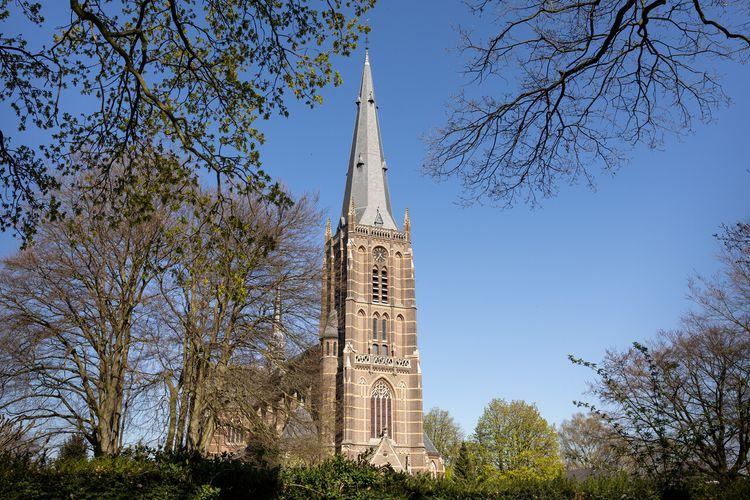
Het Pomphuiske
Dr Nicolaas Landman was the doctor in Helvoirt. He was partly responsible for getting the pump house built to guarantee the residents a better water1

Level crossing
When the first steam train came past here in 1880, the peace was violently shattered. During the construction of the railway track, there were fierce1

View of Helvoirt
In the summer of 1874, Vincent stayed with his family in Helvoirt. He made a few sketches at the time, including the sketch ‘View of Helvoirt’.
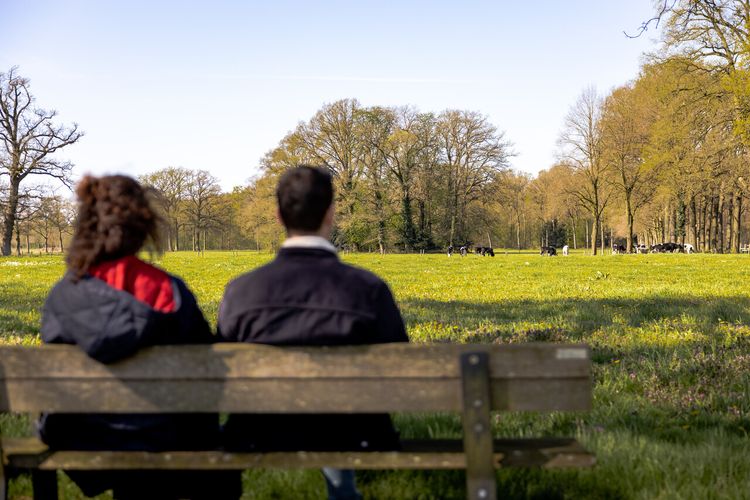
Zwijnsbergen Castle
Joan de Jonge van Zwijnsbergen (1821-1881) lived in Zwijnsbergen Castle that developed from a farming business in the late Middle Ages into a castle1
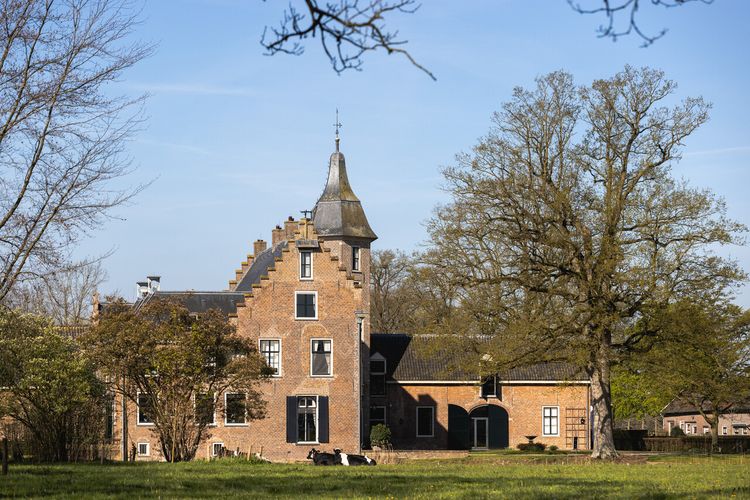
Guldenberg Leisure + Business

De Guldenberg has a unique location in Brabant on the edge of the Loon and Drunen Dunes National Park.


Guldenberg Leisure + Business
Guldenberg Hotel & Restaurant
Guldenberg 12
5268 KR Helvoirt
Hengstven
Hengstven was once a wet area with fens and marshes. In the 1930s, it was drained for agriculture. The Dutch Society for Nature Conservation has sinc1

Resting point with views of the farmland
You experience the farming life at the edge of the Loon and Drunen Dunes. From a variety of benches and seats, you can see the cows grazing and the e1
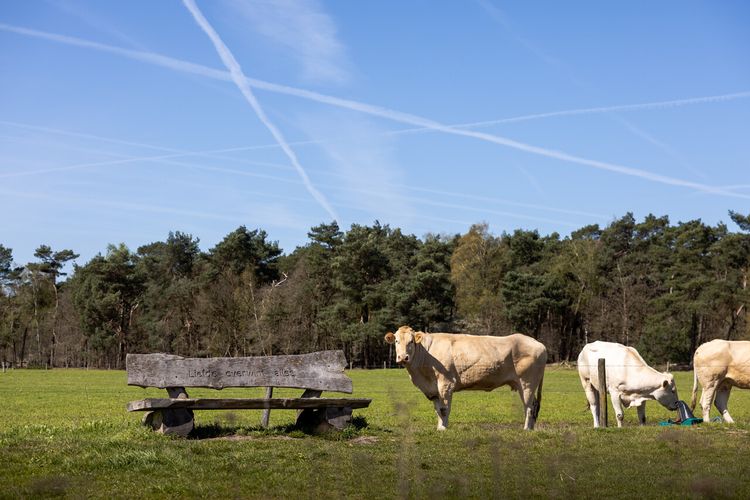
The Loonse en Drunense Duinen National Park
The Loonse en Drunense Duinen National Park is about 3,500 hectares in size and it is situated amid the cities of Tilburg, Waalwijk and 's-Hertogenbo1
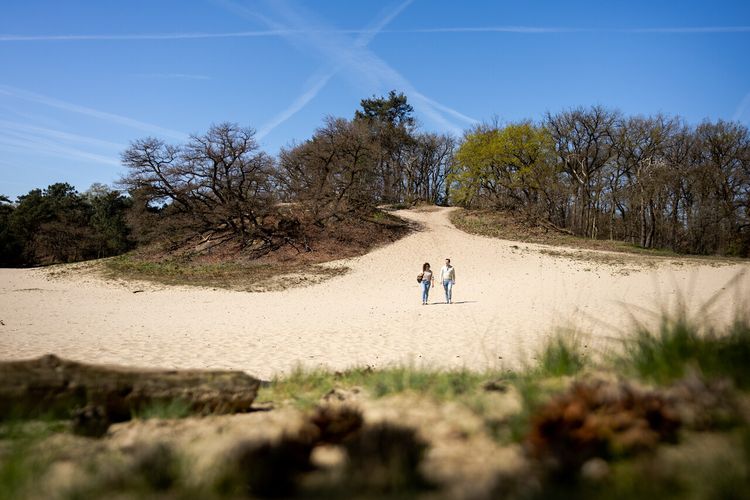

The Loonse en Drunense Duinen National Park
Roestelbergseweg 2
5171 RL De Loonse en Drunense Duinen
Distelberg
On this crossing stands a farm from 1702 that once served as a tavern. A painted wooden panel adorns the side wall, from which it appears that Napole1
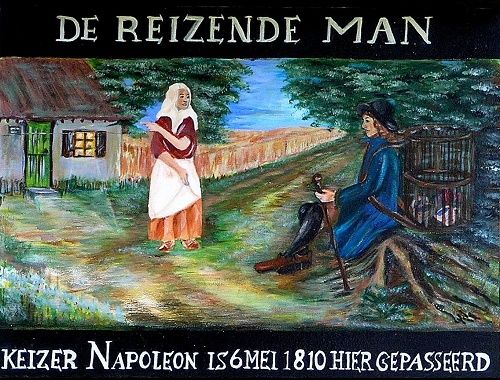
Voedselbos Het Loonse Bos
Voedselbos Het Loonse Bos (The Loon Food Forest) is situated between the nature areas of IJzeren Man and Loon and Drunen Dunes National Park.
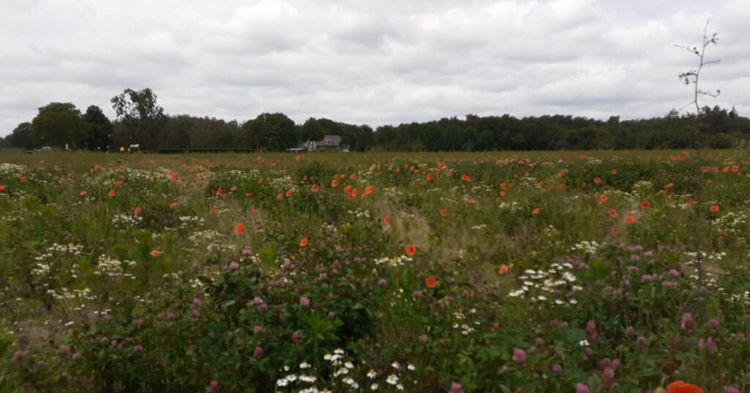
Boerderijwinkel Ons Jos
Jos and Caroline van Esch’s farm originates from 1890 and is an authentic family business. The stables and hayloft are still largely in the original1

Reformed vicarage
Opposite the Protestant Church, at number 47 on the Torenstraat, you see a stately white building, the Reformed vicarage.
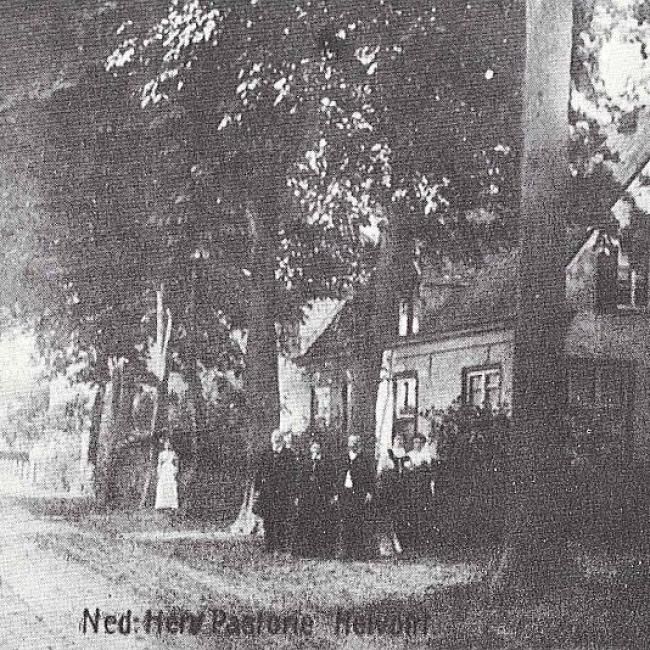
Protestant Church in Helvoirt
The Protestant Church in Helvoirt is a gothic church in the shape of a cross.
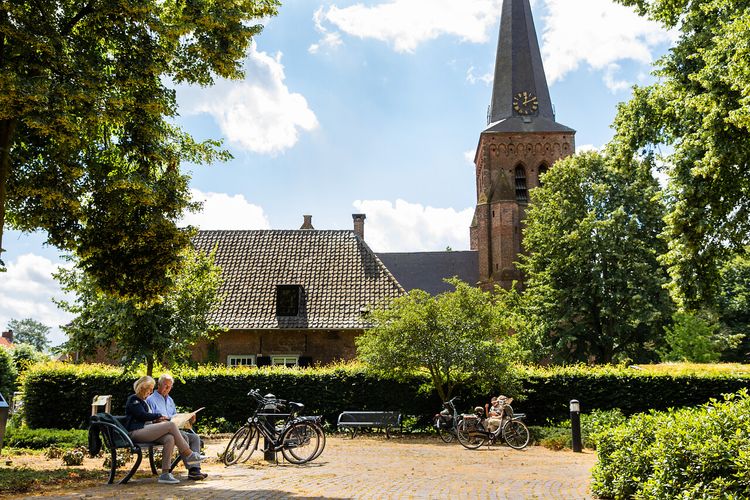
Grave of Uncle Johannes van Gogh
Opposite Vincent van Goghstraat number 5, there is a small field where you can find the grave of Johannes van Gogh. He was the eldest brother of Vinc1

Story of the route
The story of Vincent van Gogh in Helvoirt
- The year was 1871. Diagonally opposite the Protestant church in Helvoirt, new residents moved into the stately vicarage on 31 January. It was the Van Gogh family. Father Theodorus – the brand-new village minister – and his family would live in the vicarage on the Kerkstraat, later Torenstraat, for the next four years. It was a ‘detached house with a garden and a plot of land for growing potatoes’. The house dates from 1657 and was about 200 years old at the time.
- Vincent, a 17-year-old teenager, had left his family home two years before. He was working as the youngest clerk at Goupil Art Dealers, first in The Hague and later in London and Paris. Despite his adventurous travels, Helvoirt felt like ‘home’. He stayed there many times, for example during Easter and Christmas. ‘If one truly loves nature, one finds beauty everywhere. Yet, I sometimes yearn so much for Holland & especially Helvoirt.’ (Vincent wrote in a letter to his brother Theo, London, 30 April 1874).
- That summer, he once again travelled back to his home base. The natural surroundings made an impression on Vincent. The beauty was comparable to the countryside from his childhood: rich in forests, heaths and marshlands. He lovingly drew and later painted those landscapes. The Noordbrabants Museum exhibits some of his pieces.
- Helvoirt was a main source of inspiration for the artist in the making. In the summer of 1874, he drew things from his immediate vicinity, such as the vicarage and the Protestant church. On his return to London, he wrote: ‘My passion for drawing has again vanished here in England, but maybe inspiration will strike again one day.’ (31 July 1874.)
- In those days, Helvoirt had 1,450 residents and four streets. Besides farmhouses there were also a few country estates for the ‘distinguished people’. Up until 1880, there was no train station here. The ‘diligence’, a mail coach for passenger transport with – for the time – reasonable suspension, rattled along the Keiweg towards ’s-Hertogenbosch.
- Vincent visited his family in Helvoirt for four years. At the time, the landscape was dominated by marshlands, small fields and pollard willows, which are so characteristic of his later work.
Start of the walk - We start at the car park at Saint Nicholas Church, which was built between 1901 to 1903 to replace the simple ‘Waterstaatskerk’ (a church built by the Ministry of Water Management). The restored national monument is exceptionally beautifully decorated.
- Next to the church square we find Het Pomphuiske (the pump house). Before the Van Gogh family moved to Helvoirt, dysentery plagued the village. It was an epidemic that claimed the lives of 30 residents. Het Pomphuiske provided pure drinking water and served as a sort of news kiosk.
- We cross over the level crossing. When the first steam train came past here in 1880, the peace was violently shattered. During the construction of the railway track, there were fierce protests from the pastor and Vincent’s father. Their efforts were in vain, however, and they lost the battle.
- We walk further in Vincent’s footsteps. This is where he strolled through fields with a ‘view of Helvoirt’. His made his eponymous sketch in the summer of 1874. If we look back just after junction 65, towards Helvoirt’s church tower, it is as if we are wandering through his sketch. ‘Vincent’s’ pollard willows complete the picture.
- The Van Goghs were friends with the aristocratic De Jonge van Zwijnsbergen family. They celebrated Christmas on the estate of the 18th century Zwijnsbergen Castle and were allowed to walk on the grounds. In 2001, a fire reduced the castle to ashes, after which it was restored to its former glory. Joan de Jonge van Zwijnsbergen had a key role within the Protestant community and was on the church council with Vincent’s father, Theodorus.
- We pause at Hotel De Guldenberg for a culinary pit stop. With the Loon and Drunen Dunes as our backdrop, this Nature Gate is the perfect start and end point of many walking, cycling and mountain bike routes. The name Guldenberg refers to a small sand hill that used to lie in the swampy area here. The farmers had to pay one florin to pull their carts over the hill.
- The shelter of the woods makes way for an open meadow area with the lovely Hengstven nature reserve. In the 1930s, the area was drained for agriculture, but the Dutch Society for Nature Conservation and the dune famers have since restored the old fens. Heath also got the chance to grow again. Hengstven connects the arid sand landscape with wet marshland, providing a varied habitat for animals and plants.
- We take time to contemplate at some of the Resting points with views of the village. Sit down on the benches and seats. Here, you can experience the peace and beauty of the country life and the view over the farmlands like Vincent did.
- We arrived in the middle of the so-called Brabant Sahara. The Loon and Drunen Dunes,at over 3,500 hectares, form one of the most extensive areas of shifting sands in Western Europe. The typical dunescape of sand, woods and fens originates from the last Ice Age.
- At the crossing in the hamlet of Distelberg, we approach a farm from 1702. A painted wooden panel adorns the side wall, from which it appears that Napoleon and his entourage came past here on 6 May 1810.
- While we imagine ourselves back in time, we pass old farms and wander along asparagus fields. On our left is the ‘Voedselbos Het Loonse Bos’ (The Loon Food Forest). A vibrant food forest was created here, which is rich in biodiversity.
- Fans of local farm products, including prize-winning cheese, can indulge themselves at Boerderijwinkel Ons Jos. The authentic farm from 1890 – the year of Vincent’s death – houses 65 Montbéliarde cows. As dune farmers, Jos and Caroline and daughter Laura van Esch are guardians of the agricultural landscape. They connect farmers, land, countryside and residents through their products. We cross over the charming Zandleij. This stream was once landscaped to keep the nature area wet and runs from Tilburg to Cromvoirt.
- As we traverse the Zwijnsbergen Castle estate, we can see Helvoirt with its pollard willows in the foreground. Time stands still for a moment. We walk back in Vincent’s footsteps to his beloved Helvoirt.
- 10
- 63
- 64
- 61
- 20
- 65
- 60
- 46
- 10
- 8
- 9
- 11
- 15
- 16
- 6
- 4
- 7
- 13
- 67
- 65
- 20
- 61
- 64
- 63
- 10

